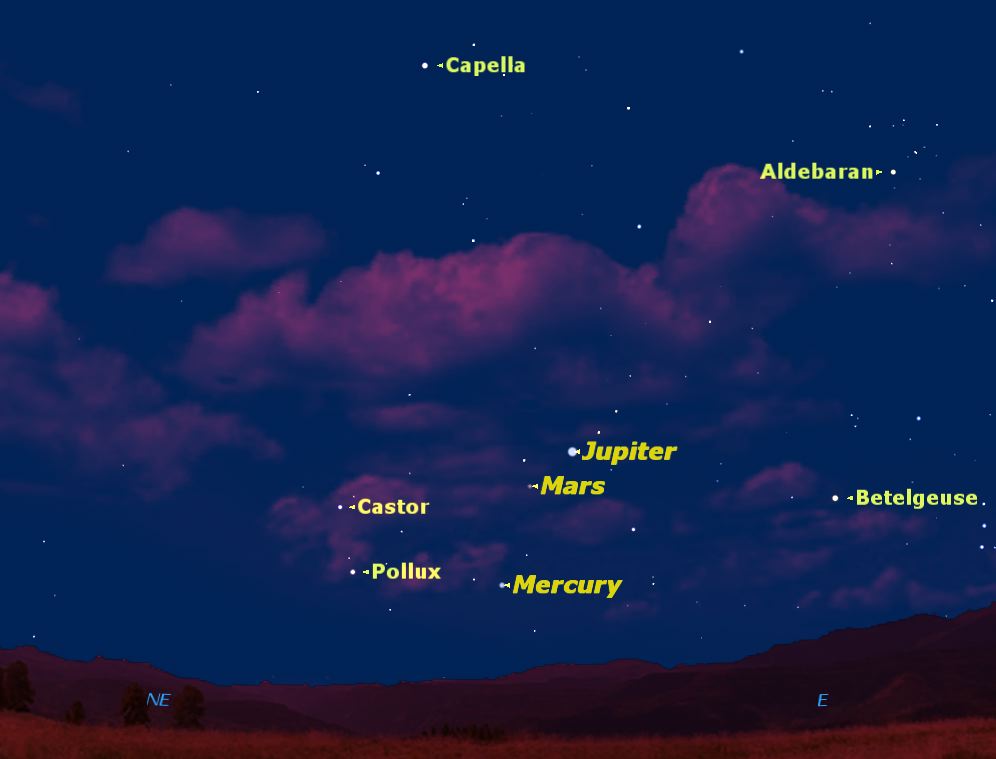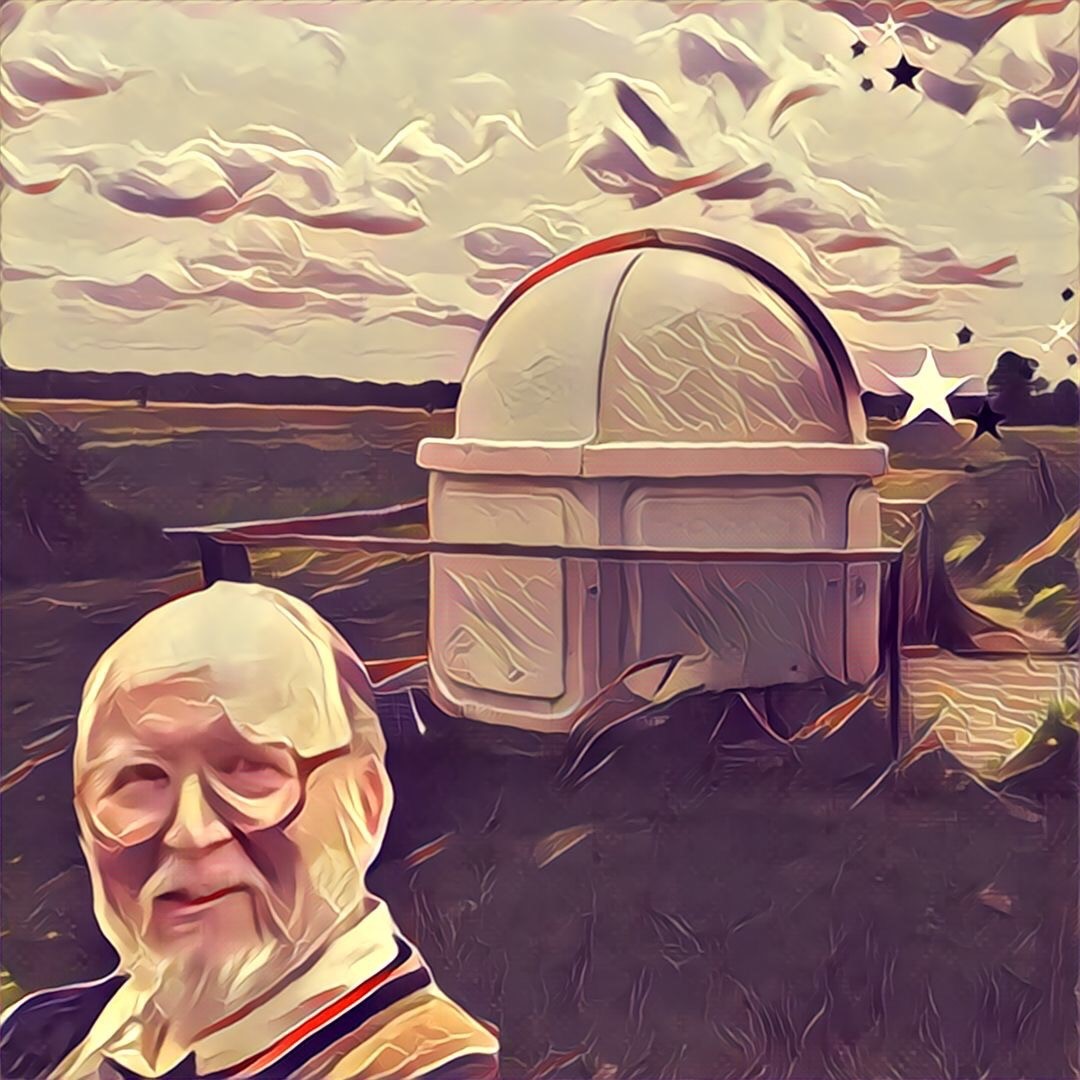Mercury Joins Mars and Jupiter in Night Sky Meetup This Week

Most stargazers have never seen the planet Mercury because it never strays very far from the sun. This week is one of the rare opportunities to catch the tiny planet just before sunrise —and with two other planets nearby.
Two things about Mercury make it a tough sky target. First and foremost, it never strays far from the sun because of its location in the inner solar system. It is always observed against a bright twilight sky, either half an hour after sunset or half an hour before sunrise, and always low in the sky.
Secondly, it is a tiny object. Now that Pluto has been demoted to "dwarf planet" status, Mercury, at 1550 miles (2440 kilometers) in diameter, is the smallest of the eight planets, with just 38 percent of Earth's diameter. [Latest Photos: Mercury Seen by NASA's Messenger Probe]
The challenge in observing Mercury is to find a tiny speck of light, low in the sky, against bright twilight. This week offers one of the rare opportunities when conditions are at their best.
Mercury will be farthest from the sun in our sky on July 30. The weeks just before and after this date are equally favorable.
The best time to spot Mercury will be about 40 minutes before sunrise, a balance between Mercury's altitude above the horizon and the brightness of twilight. Scanning the sky with binoculars will help to spot the tiny speck of light. Once spotted in binoculars, you should just be able to see Mercury with the unaided eye.
Because of Mercury's low altitude, a low cloudless eastern horizon is necessary. The task is made easier by the presence of two much brighter planets in the dawn sky, Jupiter and Mars. Mercury will be below and to the left of these two objects.
Breaking space news, the latest updates on rocket launches, skywatching events and more!
Once you spot Mercury, locate it relative to landmarks on your horizon, and see how high you can follow it as it rises and the sky becomes brighter. If you have a telescope, this task becomes easier.
Seen in a telescope, Mercury will look like a tiny gibbous moon. As it rises higher in the sky, it will clear the turbulence, and the view will improve.
Congratulations! You have succeeded in observing one of the most elusive objects in the sky. It is said that the great 16th-century astronomer Johannes Kepler never managed to see Mercury.
This article was provided to SPACE.com by Starry Night Education, the leader in space science curriculum solutions. Follow Starry Night on Twitter @StarryNightEdu.
Join our Space Forums to keep talking space on the latest missions, night sky and more! And if you have a news tip, correction or comment, let us know at: community@space.com.

Geoff Gaherty was Space.com's Night Sky columnist and in partnership with Starry Night software and a dedicated amateur astronomer who sought to share the wonders of the night sky with the world. Based in Canada, Geoff studied mathematics and physics at McGill University and earned a Ph.D. in anthropology from the University of Toronto, all while pursuing a passion for the night sky and serving as an astronomy communicator. He credited a partial solar eclipse observed in 1946 (at age 5) and his 1957 sighting of the Comet Arend-Roland as a teenager for sparking his interest in amateur astronomy. In 2008, Geoff won the Chant Medal from the Royal Astronomical Society of Canada, an award given to a Canadian amateur astronomer in recognition of their lifetime achievements. Sadly, Geoff passed away July 7, 2016 due to complications from a kidney transplant, but his legacy continues at Starry Night.

